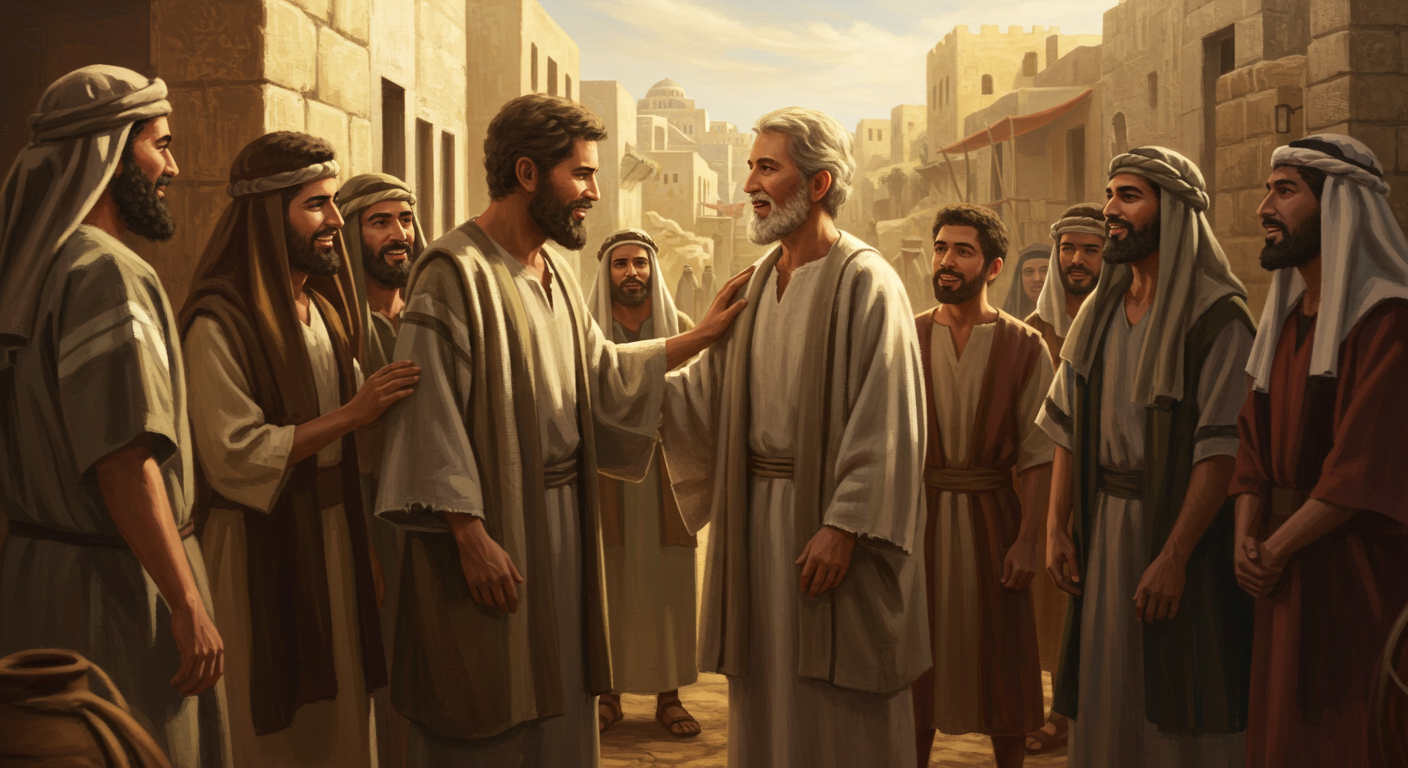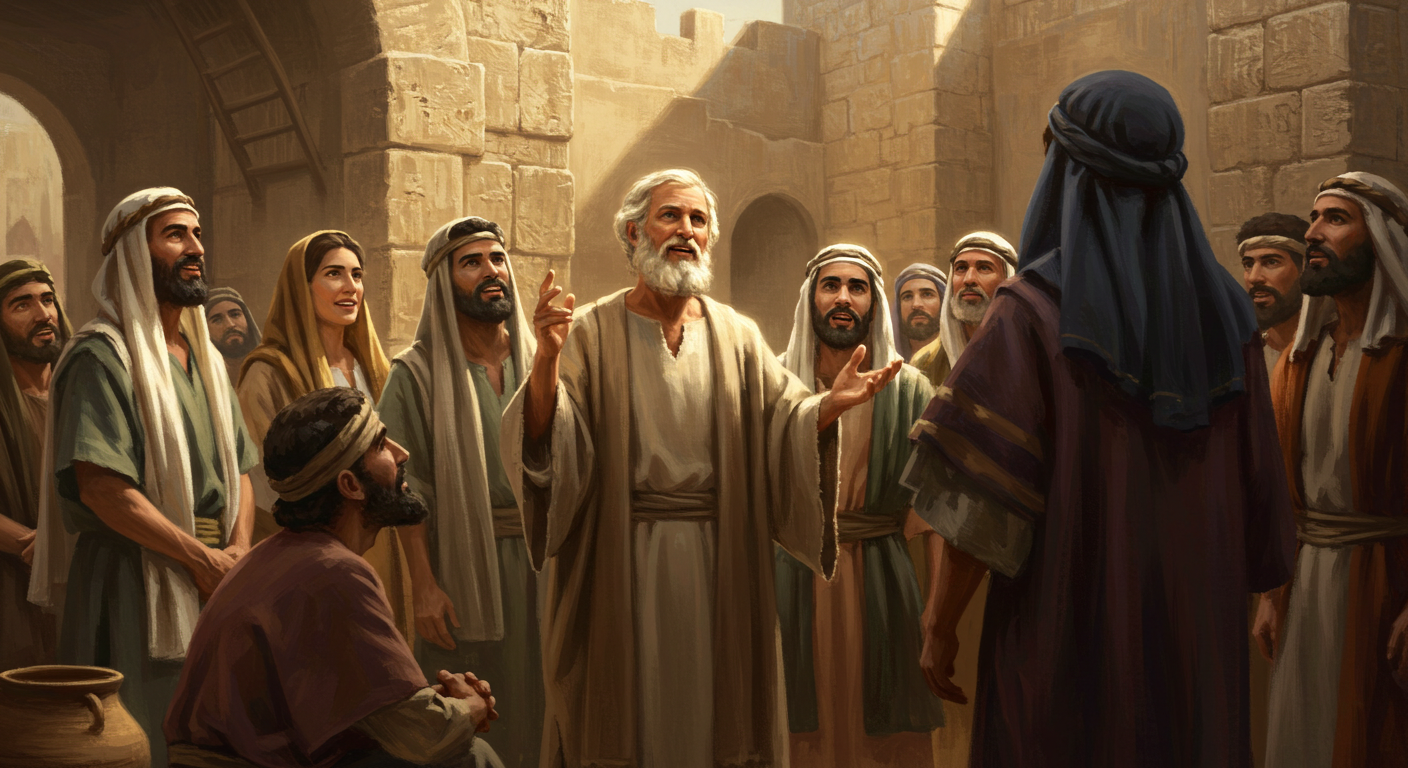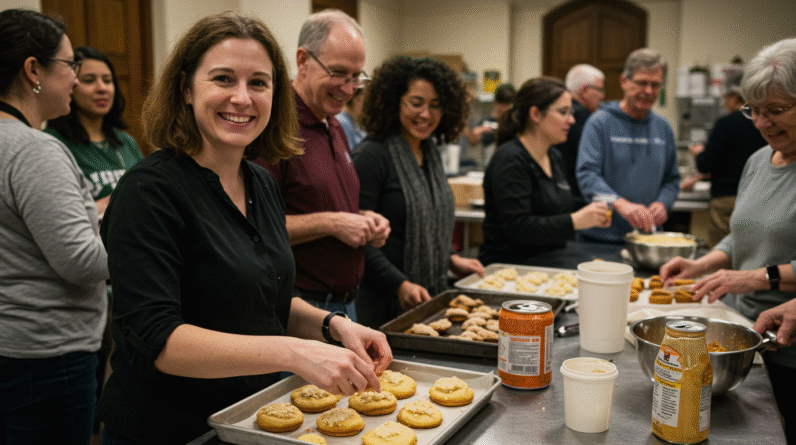Barnabas — Encouraging Others Through Service
You’re about to walk through the life of Barnabas, one of the most encouraging figures in the New Testament. His story doesn’t come with dramatic showmanship, flashy miracles, or pulpit charisma. Instead, Barnabas models a steady, service-driven faith that strengthened the early church. As you read, you’ll see how his actions—sometimes quiet, sometimes bold—invite you to a practical discipleship that builds people up. In this study, you’ll encounter Scripture, application, and pastoral reflection that will help you shape your own pattern of encouragement. If you’re searching for Barnabas encouragement Bible resources to inspire service in your life and church, this article will give you both the biblical portrait and the practical steps to apply it.
Who was Barnabas?
Barnabas appears as a sterling example of someone whose spiritual impact came through service more than celebrity. His given name was Joseph, and he was a Levite from Cyprus. That’s important because it tells you he had a background in Jewish religious practice, though he became a key servant in the multi-ethnic, missionary movement of the early church. The first time the book of Acts mentions him, it uses a nickname that tells you everything: Barnabas, which means “son of encouragement” or “son of consolation.” That name wasn’t given lightly—it was earned by his life.
You can read the original introduction to Barnabas here: Acts 4:36-37. In those verses, the Spirit of the community recognizes sacrificial generosity. You’ll notice that naming in Scripture often reflects vocation; the church named him for what he already was—a builder of people.
A Levite from Cyprus: identity that shaped service
Being a Levite and an immigrant from Cyprus gave Barnabas a unique perspective. He wasn’t a Jerusalem insider, and that outsider status helped him see newcomers differently. Leaders who come from outside the inner circle often offer fresh compassion rather than clubby protection. You can relate: when you’ve been on the outside, you tend to make space for the outsider. That was Barnabas’ gift. His origin shaped his empathy, and empathy became a ministry.
The name: “son of encouragement”
Barnabas’ nickname shows you what the early church saw in him. They called him the “son of encouragement,” and the phrase points to a ministry focused on lifting others, strengthening their faith, and giving them a place to belong. This is not just a sentimental label; it’s ministry DNA. The book of Acts records him encouraging new believers in Antioch to “remain true to the Lord with all their hearts.” That’s a pastoral, pastoralizing act—coming alongside people to strengthen their resolve and deepen their faith.
You can read that passage here: Acts 11:23. When you study Barnabas, notice how encouragement is not merely cheering from the sidelines; it is strategic, spiritual, and sacrificial. The best encouragers do things for people that help them stay in the race.
Barnabas and Saul: a partnership of service
One of the most striking aspects of Barnabas’ story is his relationship with Saul (Paul). When Saul first came to Jerusalem after his conversion, the young believers were understandably wary of him, given his past persecution of the church. But Barnabas took the risk to introduce Saul and vouch for his change. That introduction opened doors for Saul’s ministry and, by extension, shaped the course of church history. Barnabas’ willingness to stand in the gap for a repentant persecutor tells you something crucial: encouragement can be redemptive and catalytic.
Read the record of that introduction here: Acts 9:26-27. When you see someone new or controversial, you’re the kind of person God uses to give them a second chance—if you step in, speak up, and show trust.
Barnabas as mentor and bridge-builder
Beyond that introduction, Barnabas intentionally invested in the young church in Antioch and in Saul. He mentored Saul, helped him integrate into the leadership, and worked with him on the mission field. Acts tells you that Barnabas sought Saul out for that very reason: to mentor and equip. When you think of ministry strategy, don’t forget mentorship. Service has a shelf life if it’s not imparted—Barnabas passed the faith on by teaching, modeling, and entrusting others.
You can read about Barnabas mentoring in Antioch here: Acts 11:25-26. Notice the rhythm: observe, encourage, equip, release. That sequence is a practical template you can use today.

Barnabas’ ministry style: encouragement through service
Barnabas’ style wasn’t showy. It was relational, generous, and strategic. He served in ways that multiplied ministry rather than simply signaling his own piety. You’ll see three consistent patterns in his life: sacrificial giving, relational encouragement, and strategic sending. Those three patterns are the backbone of sustainable ministry. If you want to be effective in your church or community, adopt these characteristics and practice them with humility.
Giving sacrificially: generosity that opens doors
One of the first things Acts records about Barnabas is his willingness to sell a field and give the proceeds to the apostles for distribution to the needy. That’s not just philanthropy; it’s a form of encouragement. When you meet material needs, you free people to focus on spiritual growth. You can read about his gift here: Acts 4:36-37. Generosity cultivates trust, and trust undergirds spiritual growth and community resilience.
When you give sacrificially, you’re not just funding a program—you’re investing in people’s capacity to respond to God. Practical generosity says, “I believe you’re worth it; your spiritual journey matters to me.”
Encouraging new believers in Antioch
Barnabas was sent to Antioch to help with the new church, and when he got there, he saw people who needed confidence in their faith. Rather than rebuke or lecture, he encouraged them to stay faithful. That encouragement was both emotional and doctrinal: it comforted hearts and reinforced commitment. You can see that pastoral tenderness here: Acts 11:23. When you encourage people, you do more than flatter—you give them a spiritual spine.
Leading by sending: commissioning the church to mission
Barnabas also had the eye of a missionary director. When prophets and teachers were serving in Antioch, the Holy Spirit said, “Set apart for me Barnabas and Saul.” The church fasted, prayed, and sent them off on mission. That kind of sending is an act of encouragement; it communicates trust and invests authority in people. See the commissioning moment here: Acts 13:1-3. When you release people for ministry, you’re saying, “Go, and I believe God will use you.”
That’s a rare skill—leadership that empowers rather than hogs the platform. If you want to encourage others, learn to send them.
Barnabas in the mission field: resilience and compassion
Barnabas didn’t just plant seeds in Antioch; he went with Paul on the first missionary journey to Cyprus and Asia Minor. Throughout those travels, Barnabas demonstrated consistent compassion toward both the lost and the inexperienced. He worked with Paul to preach the gospel, perform signs and wonders by God’s power, and endure persecution. That kind of perseverance is emblematic of his service orientation: he stayed with people in hard places and shared dangers and joys alike.
You can read parts of the missionary narrative here: Acts 13:4-12 and the broader journey in Acts 14:8-20. When you serve with persistence, you become the kind of person others count on in crisis and in celebration.
Conflict, courage, and character: the split with Paul
Barnabas is not merely a hagiographic figure. He was human and imperfect, and his story includes a painful disagreement with Paul over John Mark. Barnabas wanted to give Mark another chance after he had left them earlier in the journey; Paul disagreed, and they separated. That split is recorded plainly in Scripture, and it shows you a couple of important truths: first, even faithful servants have disagreements; second, sometimes separation is the wisest path forward for ministry. Their parting, while painful, didn’t end God’s work; both men continued serving in different contexts.
Read the account of the disagreement here: Acts 15:36-41. That chapter gives you a real-life example of conflict resolution failures and grace. You’ll notice that Barnabas’ loyalty to an underdeveloped leader (John Mark) cost him his partnership with Paul, but it also allowed Mark to grow in a rehabilitative setting. Later, John Mark becomes useful in ministry—a vindication of Barnabas’ instinct. See the later affirmation of Mark here: Colossians 4:10 and 2 Timothy 4:11. That outcome tells you patience and second chances can have long-term payoffs.
What the split teaches you about disagreement
Disagreement doesn’t have to become destruction. Barnabas and Paul both continued effective ministry in separate spheres. You can learn to hold convictions and still release relationships. Sometimes the best thing you can do for someone is to allow them to follow a different calling. You don’t have to win every argument to be faithful.
Practical lessons from Barnabas for your life
Barnabas’ life gives you specific, practiceable habits you can adopt. These are not abstract ideals; they’re actionable ways to serve people and strengthen your church. Below are lessons shaped by Scripture and grounded in pastoral wisdom. Each one is aimed at helping you move from inspiration to action.
1) Encourage with presence more than words
You can say encouraging things, but the deepest encouragement is your consistent presence. Barnabas didn’t just deliver pep talks; he showed up to live with people, eat with them, and serve them. Presence communicates value and solidarity. If you want to encourage like Barnabas, start by showing up.
Scripture that models presence: Acts 11:22-26.
2) Give sacrificially to remove barriers
Barnabas sold property to meet urgent needs. You won’t likely be called to sell real estate, but you will be called to remove barriers for people—whether by giving time, money, or resources. Think strategically: what small sacrifice can you make this month that will help someone else grow spiritually?
Inspired principle: see Acts 4:36-37.
3) Mentor and advocate for newcomers
When someone new or controversial comes to your church, be the Barnabas figure who helps them integrate. Speak up for them, introduce them, and give them a place to belong. Mentorship is intentional and sacrificial; it requires time and patience.
Scriptural example: Acts 9:26-27.
4) Learn to send others
One of Barnabas’ greatest gifts was to send people into ministry. That’s an act of encouragement that multiplies ministry. If you lead a team or small group, step back and ask, “Who can I empower to lead this?” Sending builds leadership pipelines and honors the Spirit’s work.
See the commissioning: Acts 13:1-3.
5) Invest in second chances
When people fail, you can condemn them or you can invest in their restoration. Barnabas chose restoration for John Mark, which bore fruit later. You are a steward of people, not just of programs. Restoration requires risk, but it’s how discipleship works.
See the fallout and later fruit: Acts 15:36-41 and 2 Timothy 4:11.
6) Follow the Holy Spirit’s lead
Barnabas listened to the Spirit when the church in Antioch sent him with Saul. He didn’t cling to a human plan; he sought God’s direction and obeyed. You will get better results when your plans are Spirit-led rather than ego-driven.
Witness the Spirit’s instruction: Acts 13:2.

How to practice “Barnabas encouragement Bible” habits today
You asked earlier about practical application, and here it is. If you want to make Barnabas-style encouragement a pattern in your life, follow these steps. Each of these is simple enough to begin this week and robust enough to shape long-term character.
- Start with prayer: Ask God to show you one person who needs encouragement and one practical step you can take for them this week.
- Give intentionally: Set aside a small budget for mercy ministry. Even modest funds, when given sacrificially, build trust and free people to serve.
- Mentor one person: Commit to meeting someone weekly for 12 weeks to invest in their spiritual life.
- Practice the art of introduction: When someone new shows up in your church or group, introduce them by name, tell one positive thing about them, and invite them into service.
- Learn to release: Identify one leader you can empower and one responsibility you can hand off in the next month.
As you practice these steps, you’ll be living out Barnabas encouragement Bible values—serving people in ways that encourage their faith and strengthen the body of Christ.
Barnabas in your small group and church leadership
If you lead a small group, team, or church, Barnabas becomes a leadership archetype for healthy ministry. He shows you how to create an environment where leaders are developed, gifts are released, and people are restored. You’ll be tempted to keep control, to reward loyalty by keeping people close. Barnabas teaches you instead to empower loyalty by investing and releasing.
A couple of structural practices to adopt:
- Create a “Newcomer Integration” process where every new attendee is paired with a mentor for 8–12 weeks.
- Create a “Second-Chance Fund” or policy to help re-engage those who stepped back from ministry.
- Build a culture of sending where every ministry identifies people to start new groups or new mission efforts.
When your systems mirror Barnabas’ approach—presence, generosity, and sending—you’ll create a church where encouragement is normal, not optional.
Responding to conflict with grace: a Barnabas approach
Barnabas didn’t always get it right. His decision to take John Mark back into ministry cost him his partnership with Paul. But he accepted that cost and continued to serve. That’s a pastoral posture you can cultivate: be willing to risk relationships for the sake of people’s growth. Not every disagreement is a moral failing; sometimes it’s a strategic difference of opinion. What matters is how you handle the fallout.
You can use this simple framework when conflict arises:
- Clarify the issue and the underlying values.
- Prioritize people over being right.
- If separation is unavoidable, do it with grace and a blessing.
- Keep praying for reconciliation and fruit.
Acts records both the conflict and the redemptive outcome later, when John Mark is again useful to ministry. See both the conflict and the later usefulness here: Acts 15:36-41 and Colossians 4:10.
The long-term fruit of encouragement
Encouragement has a harvest you often don’t see immediately. Barnabas invested in the people who, decades later, would help shape the church. Think of encouragement like planting fruit trees: the initial labor looks small, but it produces shade and food for generations. When you encourage someone today—by mentoring, giving, or sending—you might not see the full fruit until years down the line. That’s how kingdom investment works.
You can trust that God multiplies small acts of grace into leadership networks, mission fields, and thriving churches. Barnabas’ legacy is proof: his acts strengthened Antioch, equipped Paul for missions, and rehabilitated John Mark for later ministry. Those are exponential outcomes of consistent encouragement.
Final reflections: the legacy of a servant encourager
When you look at Barnabas, you’re not looking at a flawless hero; you’re looking at a faithful servant who chose people over prestige. He gave sacrificially, mentored the emerging leader Paul, sent missionaries, and risked his reputation for the sake of a struggling disciple. That’s the kind of leadership that greases the wheels of lasting ministry. If you want to be a builder like Barnabas, cultivate humility, give generously, mentor carefully, and be willing to take calculated risks on people.
As you consider your next step, remember this: encouragement is not merely a warm feeling; it’s a discipline of service. You can practice Barnabas encouragement Bible habits daily—by showing up, by speaking hope, by sharing resources, and by releasing people to serve. Those disciplines will strengthen your church and deepen your spiritual life.
Barnabas’ life invites you to be an encourager who serves. He didn’t create a brand; he created disciples. You can choose the same path—one act of faithful service at a time.
Explore More
For further reading and encouragement, check out these posts:
👉 7 Bible Verses About Faith in Hard Times
👉 Job’s Faith: What We Can Learn From His Trials
👉 How To Trust God When Everything Falls Apart
👉 Why God Allows Suffering – A Biblical Perspective
👉 Faith Over Fear: How To Stand Strong In Uncertain Seasons
👉 How To Encourage Someone Struggling With Their Faith
👉 5 Prayers for Strength When You’re Feeling Weak

📘 Jesus and the Woman Caught in Adultery – Grace and Mercy Over Judgement
A powerful retelling of John 8:1-11. This book brings to life the depth of forgiveness, mercy, and God’s unwavering love.
👉 Check it now on Amazon
As a ClickBank Affiliate, I earn from qualifying purchases.
Acknowledgment: All Bible verses referenced in this article were accessed via Bible Gateway (or Bible Hub).
“Want to explore more? Check out our latest post on Why Jesus? and discover the life-changing truth of the Gospel!”








